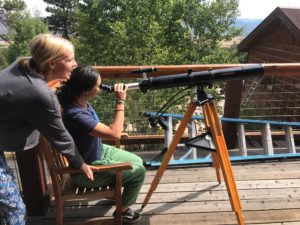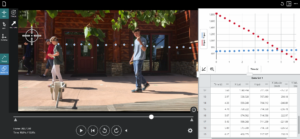Our first month in science at The Link School has been full of hands-on experiences and establishing good systems and methods for investigation. With a couple days of block scheduling in the weekly mix, we’ve also been able to pile into the Suburban for some up and down valley excursions.
Unit 1 in Geology/Astronomy focused on our “sense of place”. Our first school wide expedition took us to the base of Mt. Harvard and beyond. Out in the field, we scaled down the solar system and universe. We realized just how small our world is in the grand picture, yet how wonderful it is that we are here and present on this habitable planet! We met our nearest neighbors, the sun and the moon, and realized just how delicate yet supportive that Earth-Moon-Sun system is.
Later excursions took us up to an old copper mine. Here, we rock hounded for clues to Earth’s past. We found traces of copper in the granite boulders, leftover malachite, open mine shafts, and relics from a bygone era.
This past week, we had the chance to meet with a USFS ranger on the AU property to take a look at their forest management program. As fires and natural disasters continue to become a part of our life, we look for signs and solutions within the forest, the soils, the geology, and the biology.
Physics this month was focused on math models to explain motion—specifically motion of a constant speed. One of our excursions took us north a few miles to investigate the motion of a pivot irrigation sprinkler on a hay field. Students collected data from each wheel following lab guidelines (multiple trials, many data points, wide range). The students then generated a math model that calculated speed and also predicted the location of the pivot throughout the day. This in turn helped the farmer re-nozzle his sprinkler heads to achieve his desired volume of rainfall on the hay crop.
A follow-up lab on constant speed was conducted the following week utilizing Vernier video software to analyze the motion of a student walking. Traditional data was collected (tape measure and stopwatch) and compared with that gathered from the video analysis.
– Rick Bieterman, Science Teacher










